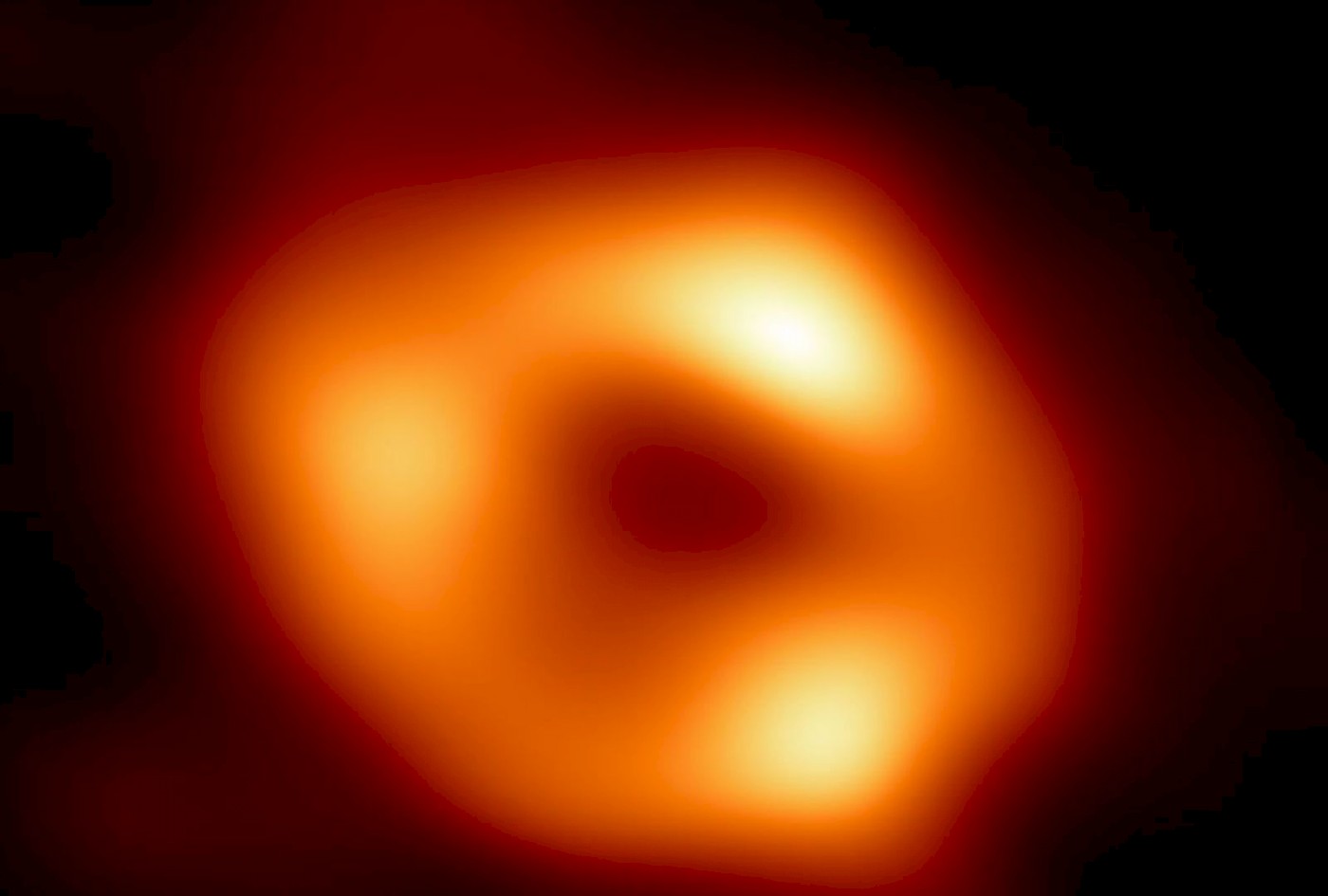
An image of the ultracompact object at the centre of our galaxy, captured by an array of networked radio telescopes
The Vice Chancellor and Chairman of the Board of Management of Ahmedabad University, Professor Pankaj Chandra, is pleased to announce the creation of a new International Centre for Space and Cosmology. It is an initiative for state-of-the-art research in the areas of Space, Astrophysics and Cosmology, and for the dissemination of important developments in these areas amongst the general public. It will also seek to reach out to young students, encourage them to consider a research career in Space and Cosmology, and provide them with information regarding opportunities in these areas.
The Centre will operate closely with other research clusters at Ahmedabad University. Faculty and students will contribute to carrying out path-breaking research and making new contributions in the international arena. In addition to carrying out research, the International Centre for Space and Cosmology will organise workshops and conferences, host visitors for short and long durations, engage across the nation with students having an interest in Astrophysics, Space and Cosmology, and create academic programmes.

Professor Pankaj Joshi is a Distinguished Professor of Physics at the School of Arts and Sciences |
Anchored at Ahmedabad University’s School of Arts and Sciences, the Centre will work in collaboration with colleagues nationally and internationally with related interests. The Director, Professor Pankaj Joshi, is a scientist acknowledged for his fundamental contributions in Black Hole Physics and Cosmology. One of his major topics of research is the possibility of gravitational collapse of massive stars into naked singularities rather than black holes. The other founding faculty members of the Centre are Professor Gaurav Goswami and Professor Raghavan Rangarajan, both of whom work on Cosmology and High Energy Physics,particularly in the context of early Universe physics and correlations with observations of the Universe today. The launch of the new Centre coincides with recent observations by the Event Horizon Telescope (May 2022) of the highly compact and dense object at the centre of the Milky Way galaxy. Using an array of networked radio telescopes around the globe, an image has been obtained showing the ultracompact object at the centre of our galaxy. The JMN (Joshi-Malafarina-Narayan) naked singularity model proposed and published in 2011 by Professor Pankaj Joshi and colleagues contributed to the modelling that underlies this discovery. |
The EHT Discovery of the Shadow of Sagittarius A* and the JMN Naked Singularity
The Event Horizon Telescope collaboration has revealed a monumental discovery of the image of the ultracompact object at the centre of our galaxy. In an important and exciting development, the discovery was announced on May 12, 2022, in a press conference by the National Science Foundation of the US held in Washington DC.
By means of a huge technical networking of radio telescopes spread over different parts of the globe, and through extensive data analysis, this most interesting image of the Galactic Central object was created. The generation of the image was one of the main purposes of the collaboration and is a noteworthy achievement technically as well as in terms of large data analysis.
The collaboration has sought to analyse the nature of the ultracompact object at the centre of our galaxy. It maintains that while there is overwhelming evidence that there is a huge concentration of mass sitting at the centre of our Milky Way galaxy, the issue of whether it is a black hole or not remains far from settled. They have considered various alternatives such as naked singularities and wormholes. They report in one of their papers, paper V of the series, that the JMN (Joshi-Malafarina-Narayan) naked singularity with a photon sphere could be the best black hole Mimicker. The central object and its nature remain mysterious. This is because just as a black hole event horizon would create a shadow, the naked singularity would create a similar shadow, and therefore it is impossible to distinguish between the two.
When stars more massive than about 10 solar masses shrink under their own gravity at the end of their lives, a spacetime singularity results, as predicted by the Einstein theory of gravity. Roger Penrose was awarded the Nobel Prize in 2020 for the discovery of the formation of singularities in the gravitational collapse of massive stars. A singularity is a place and epoch in the Universe where mass densities and all physical quantities diverge and become arbitrarily large. Such singularities are either hidden within an event horizon of gravity, when they are called ‘black holes’, or the event horizon curtain may not form, when it is called a ‘visible’ or ‘naked’ singularity. The Big Bang singularity that gave rise to our Universe is itself a naked singularity. The JMN naked singularity model was proposed and published in 2011 by Professor Pankaj Joshi and his colleagues in a Harvard University collaboration. This has turned out to be very relevant towards modelling the centre of our own galaxy, namely the Sgr A*, as pointed out by the recent epochal announcement of the EHT collaboration.
Equilibrium configurations from gravitational collapse. Pankaj S. Joshi (Tata Inst), Daniele Malafarina (Tata Inst), Ramesh Narayan (Harvard-Smithsonian Ctr. Astrophys.) Published in: Class.Quant.Grav. 28 (2011) 235018 e-Print: 1106.5438 [gr-qc]